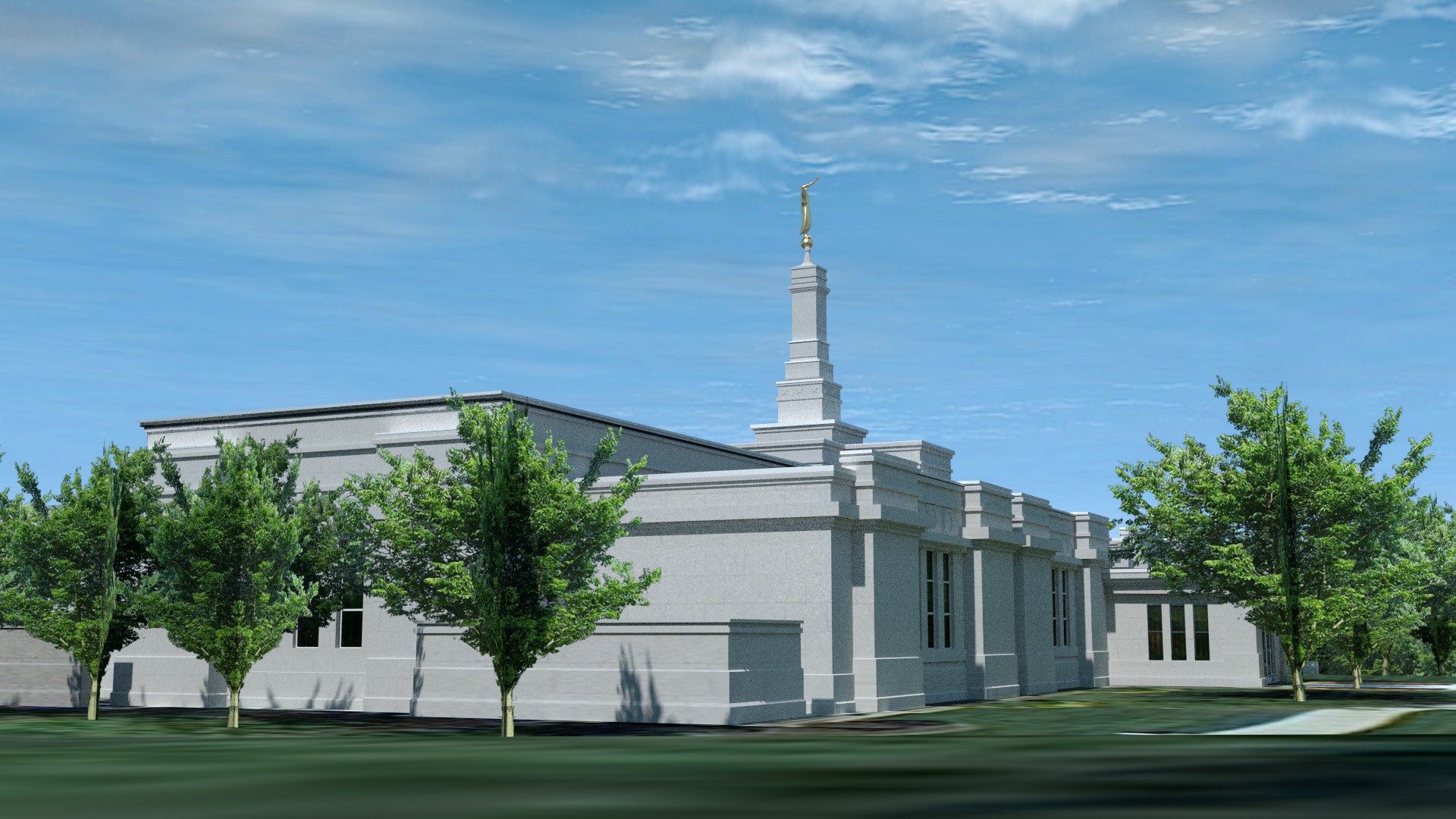
Palmyra New York Temple Wiki
Description
History
The Palmyra, New York, area is steeped in Church history. The temple sits on ground owned by the Church adjacent to the Sacred Grove and is also on the grounds where the Smith family log cabin stood. It was in that little home that Joseph Smith received visitations from the angel Moroni. Near the temple site is the Hill Cumorah where the gold plates were buried, which Joseph Smith later translated to the Book of Mormon. About thirty miles away is the Peter Whitmer Farm where the Church was first organized in 1830.
Announcement
The Palmyra New York Temple was the 100th announced temple of the Church.
Groundbreaking
At the groundbreaking ceremony, past Church President Gordon B. Hinckley said, “This is where the First Vision occurred and I think it appropriate that we build a House of the Lord on this ground. I regard this temple as perhaps the most significant, in one respect, in the entire Church. It was right here in the Sacred Grove where it all began.”[1]Church News, 29 May 1999 President Hinckley also commented on the incredible growth of the Church saying, “From the First Vision this work has spread over the earth to more than 160 nations with more than 10 million people who are members of this Church. Who could ever have imagined it when that boy [Joseph Smith] walked into the grove, that the consequences of that event would become what we see today.”[2]Church News, 29 May 1999
Open House
Local reaction to the new temple was positive and more than 30,700 visitors toured the new temple before its dedication. The temple serves about 18,000 members within seven stakes. The Palmyra New York Temple was dedicated on 6 April 2000, the 170th anniversary of the organization of the Church. While only about 1,200 members attended the dedicatory sessions within the temple itself, nearly 1.5 million members took part through media broadcasts throughout the United States and Canada.
Dedication
The day before the Palmyra New York Temple dedication, snow fell, and the morning of April 6th began with heavy rain and chill temperatures. But as President Hinckley and others went out to lay the cornerstone of the temple bright sunshine broke through the clouds. After the cornerstone ceremony the storm continued, “leaving representatives of the news media commenting on the timing of the temporary calm and sunshine.” [3]“News of the Church,” Ensign, May 2000, 107 Members of the Church of Jesus Christ were not surprised. During the dedication President Hinckley said: “This is the anniversary of the organization of Thy restored Church. One hundred and seventy years ago it was established in nearby Fayette. From that small beginning it has spread over the earth, and our hearts are filled with gratitude for its marvelous growth.” [4]”Dedicatory prayer: ‘We acknowledge that it all began here,'” Church News, 15 Apr. 2000
The Palmyra New York Temple was dedicated on April 6, 2000, exactly 170 years after The Church of Jesus Christ of Latter-day Saints was formally organized in Fayette, New York, (about 30 miles from Palmyra) on April 6, 1830.
The dedicatory services of the Palmyra New York Temple were broadcast over the Church’s encrypted satellite system to stake centers and Church facilities throughout North America.
Dedication Order
The Palmyra New York Temple was the first temple built in the state of New York. It was the 77th operating temple of The Church of Jesus Christ of Latter-day Saints
The Palmyra New York Temple is one of three temples built in locations of historic significance for the early Church. (The other two temples are the Winter Quarters Nebraska Temple and the Nauvoo Illinois Temple.)
Presidents and Matrons
Detail
Location
Situated on an elevated ridge just beyond the Sacred Grove where God the Father and Jesus Christ appeared to Joseph Smith in the spring of 1820, the Palmyra New York Temple—a House of the Lord—stands as a testimony to that singular event. Rich in Church history, the Palmyra landscape is dotted with historic sites, including the Hill Cumorah Visitors’ Center where Joseph Smith retrieved the ancient gold plates, which were translated into the Book of Mormon: Another Testament of Jesus Christ.
Exterior
The exterior is Bethel White granite. Forty art glass windows inside the temple depict Joseph Smith’s First Vision and the surrounding Sacred Grove.
Church leaders commissioned Utah artist Tom Holdman to create the Sacred Grove-themed stained-glass windows throughout the Palmyra New York Temple including a stained glass mural of the First Vision, which hangs in the hallway. The windows in the waiting area of the Palmyra New York Temple were etched with a tree design but left transparent at the request of President Gordon B. Hinckley to provide a view of the Sacred Grove. An administration office was relocated during construction to fulfill this request.
A gold statue of the angel Moroni tops the single spire. Beautiful carved cherry wood railings, wainscoting, and moldings line the halls, along with hand-sculpted carpeting.
Interior
The Palmyra New York Temple has a total of 10,700 square feet, two ordinance rooms, two sealing rooms, a celestial room, and a baptistry.
